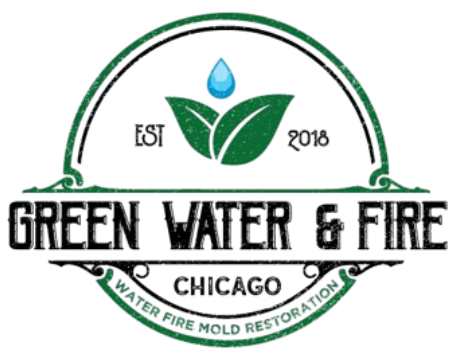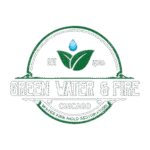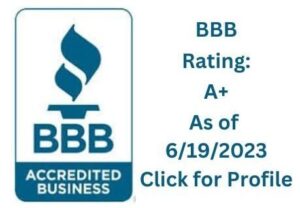Water damage is a common yet frequently underestimated hazard to property and health. Flood, leak, or appliance failure, water seepage can lead to devastating results. This guide will delve into the health damage caused by water, dangers to your home, signs to keep an eye out for, costs to fix, and what you need to know when purchasing a water-damaged home.
Water Damage Types and Sources
Water destruction refers to the damage caused by an excess of water on building materials, furniture, or other structural elements of the property. It is usually classified based on the origin of contamination and the degree of contamination:
- Clean Water: Comes from a hygienic origin, such as broken pipes or rain. Although initially safe, it can become unsanitary if not treated, as it encourages the growth of mold and bacteria.
- Grey Water: Originating from appliances, showers, or sinks. It contains microorganisms and chemicals that can make you sick if it is not cleaned up right away.
- Black Water: Water from sewage backups, flooding, or standing water that is highly contaminated. It is rich in pathogens, toxins, and pollutants that are dangerous for health.
Health Risks of Water Damage
Water damage is much more than just a structural problem, and it can seriously affect human health. It is important to know these health hazards, whether you are handling water damage or trying to prevent it, because time is of the essence when it comes to protecting both property and health
Mold and Mildew: The Silent Invaders
If two types of biological life do not know their place, surely they are mold and mildew.
Mold is one of the most immediate and persistent health dangers of water damage. Damp, dark conditions are what mold spores need to live, and they can start to grow within 24 to 48 hours of exposure to water. Mold and mildew can cause:
- Breathing Difficulties: Coughing, difficulty in breathing, irritation in the throat and asthma attacks, especially in those with already sensitised lungs.
- Allergic Reactions: Sneezing, scratchy eyes, rashes and congestion in the sinuses.
- Chronic Illness: Stachybotrys includes memory loss, insomnia, depression, ligament pain, eye problems, immune system issues, and so on.
- Infections: People who are immunocompromised, children and elderly are at increased risk for fungal and bacterial infections associated with mold exposure.
Microbial and viral content
Water damage from a dirty source, such as grey water or black water can introduce bacteria and viruses into your home.
- Gastroenteritis: Due to contact with or consumption of water that is unsanitary, nausea, vomiting, diarrhea and dehydration сan rесur.
- Skin Infections: Dermatitis, fungal infection, or even necrotizing fasciitis (flesh-eating bacteria) have even been reported to be secondary to elephantiasis.
- Respiratory Infections: Exposure to airborne bacteria or toxins can result in bronchitis, pneumonia, or Legionnaires’ disease.
- Viral Infections: Hepatitis A, rotavirus, and norovirus — any of which can result in extended illness periods — can be transmitted via floodwater and sewage.
Compromised Immune System
Continual exposure to these molds and bacteria can tax our immune system and make us more susceptible to chronic illness. Vulnerable populations, children, the elderly, and those with underlying health problems are at higher risk.
Chemical Contamination
Chemicals carried from paints, cleaning products and building materials can be dissolved and transported by water, posing additional risks to health if a person ingests, inhales, or absorbs the contaminated water through skin, the agency says.
How Bad Is Water Damage to a House?
Water damage is more than skin deep; it can damage a home’s structure.
Foundation Damage: When water is leaking into the ground, it can cause the soil to heave up or to sink, which in turn can cause damage to foundations in the form of cracks, settlement and other types of issues.
Walls and Ceiling Drywall damage: Although there may be some minor dents, warping and stains, once it’s dried, it is common to see these mitigations on the drywall and insulation and they may need to be replaced in part or whole.
Electrical Hazards: Water can enter the wiring in your home, leading to compromised or faulty lines, which in turn can put you at risk of fire or electrical shock.
Pests: Humidity encourages termites, rats and roaches to take up residence, and these pests do even more harm to a home and put its inhabitants at risk of falling ill
Signs of a Water Leak in Your Home
The sooner the symptoms are detected, the more limited the destruction. Watch for these signs:
- Low water pressure with fixtures
- Unusually high water bills
- Wall, ceiling, or floor with damp spots or stains
- The sound of dripping with no apparent cause
- Stale smell, or a musty and earthy smell
- Rust or corrosion on pipes
- Shrinkage cracks in basement walls or slab floors, or the foundation, walls, or ceilings of any room.
Water Damage Repair Costs and Considerations
Average cost of water damage restoration: $3,833. Repair costs can range greatly based on the level and source of the damage:
| Damage Category | Typical Cost Range | Notes |
| Minor (leaks, drywall) | $450 – $3,500 | Small leaks, minor drywall/flooring repairs |
| Moderate (mold, floors/ceilings) | $3,500 – $7,500 | Mold remediation, moderate repairs |
| Severe (structural, multiple rooms) | $7,500 – $15,000+ | Major reconstruction, extensive mold removal |
| Complete Home Restoration | $30,000 – $100,000+ | Major floods, structural failure |
| Moderate (mold, floors/ceilings) | $3,500 – $7,500 | Mold remediation, moderate repairs |
Purchasing a Home with Water Damage: Is it Beneficial?
If you’re inclined to buy a water-damaged property, it can make financial sense, but there are other things to consider as well.
Pros: Cheaper purchase price, may be worth more after fixed
Cons: Slab foundations can conceal structural problems, trap moisture, experience leaks more than once, and have costly repairs.
Best Practices: Always have a detailed inspection by a certified water damage and mold remediation professional upon buying. Please be sure to determine what was causing the issues and repair them, so that issues do not arise again in the future.
DIY vs. Professional Repair
DIY: Appropriate for small, clean water damage not involving mold or structural damage.
Professional Restoration: For extensive, contaminated, or mold-infested damage, or when structural repairs are required.
Conclusion:
If you’ve ever had to deal with water damage, you know the problem is more than a minor inconvenience; it can pose serious risks to your home and your health. Untreated water damage promotes mold growth, bacterial and viral contamination, structural weakening, and a variety of health issues from allergies to deadly diseases. A quick response time with a full professional assessment and an actual cleanup is needed to keep you safe.
FAQs
Yes. Water damage can promote a variety of chemical, microbiological, and bacterial contaminants that can cause respiratory problems, infections, and other chronic health issues, particularly in at-risk populations.
Mildew can become apparent 24-48 hours after contact with water.
Keep an eye out for musty smells, wet areas, stains, diminished water pressure, excessive water bills, and visible mold or cracks in walls or foundations.
The cost of repairs ranges from $450 for small repairs up to $100,000 and more for critical, whole-house remediation. The average is around $3,833.
It’s worth having it repaired if the damage can be adequately evaluated. Always have it professionally inspected and don’t buy unless the cause is rectified.


















